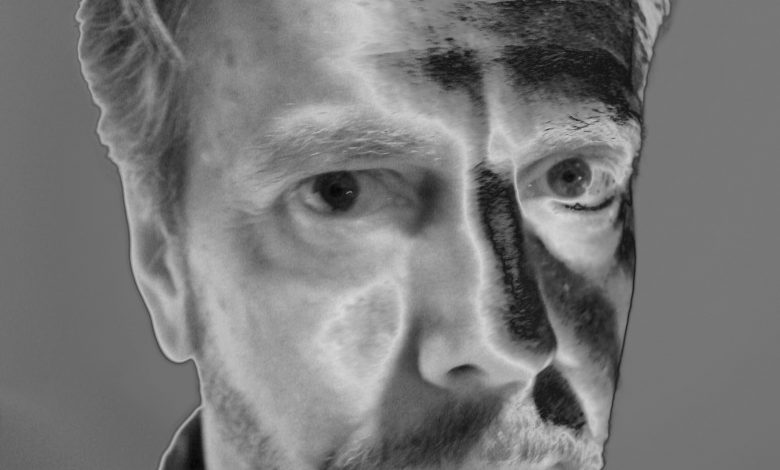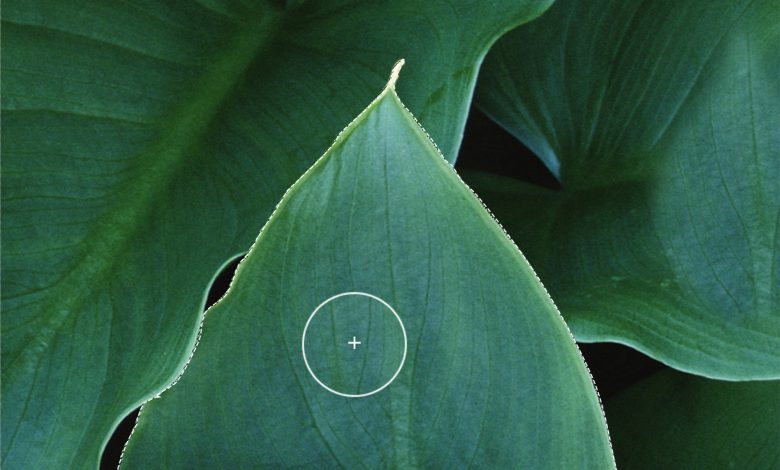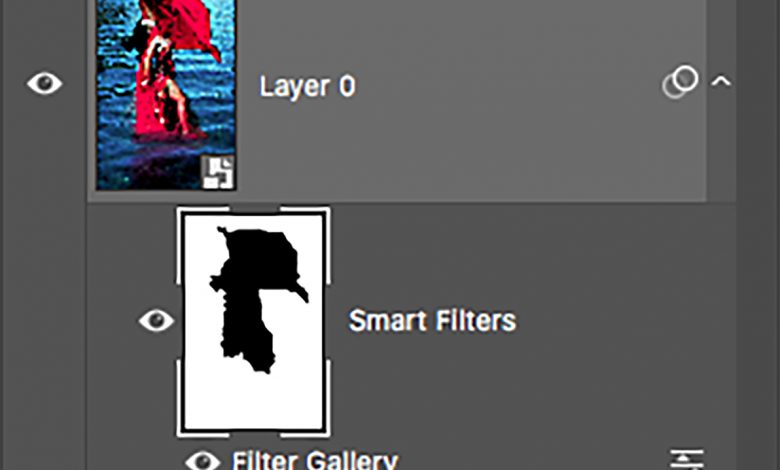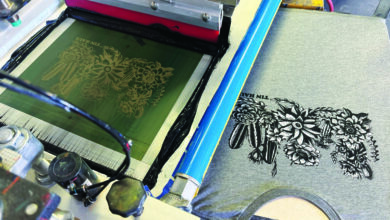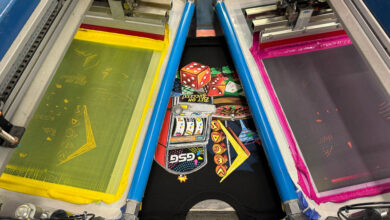The ability to isolate elements on a picture is an essential skill in the image editing process. Accurate masking determines the quality of an edited image and can be the one factor that makes or breaks the credibility of a manipulated picture. This article explores the many types of masks in Adobe Photoshop CC and introduces some of the new techniques that assure seamless editing for accuracy and believability.
What’s a Mask?
A mask, in the traditional graphic arts sense, protects a region of an image while exposing the unmasked region to various photographic effects. Before computers entered the picture, masks were cut from a red colored film called rubylith. The mask was placed over the surface of the photo and exposed to light. The regions covered by the rubylith were protected from the exposure. Believe it or not, all sorts of interesting effects could be achieved this way, including sharpening, blurring, increased contrast, solarization and many other creative effects (see Figure 1).
New Masks
The graphic technology necessary to achieve these effects required an Xacto knife, a large process camera, a darkroom, and nasty chemicals. The process was very labor and time intensive. Enter computer graphics.
Fortunately for us, software has streamlined the masking process. Isolating image elements is now much faster, easier and more precise. Because every image is different, dozens of methods for selecting and targeting image elements are a mouse-click away with the expectation that masks of any size or shape and with specific characteristics can address any selection problem.
Selection Tools
The most obvious means of creating a mask are by using any of the nine selection tools found at the top of the Tools panel (see Figure 2). The marquee tools make rectangular, elliptical or single column and single row shaped selections.
The rectangular and elliptical tools can be constrained to a specific size or proportion with controls in the Options bar (see Figure 3).
In the fly-out just below the marquee tools are the three lasso tools designed to make free-form selections. The Lasso, the Polygonal Lasso and the Magnetic Lasso all select irregular shaped selections. The first two tools are manual. The Magnetic Lasso however, automatically conforms to shape areas that are defined by contrasting edges.
Finally, below the lasso tools are the auto selection tools; the Quick Selection tool that selects areas using various sized cursors and defines edges based on their brightness (see Figure 4) and the Magic Wand that selects similar pixels within a range of brightness values or “tolerance”.
The Ants Go Marching In
When an area is selected, an animated marquee surrounds it. This marquee is often referred to as “marching ants” because of its resemblance to a column of ants on the move. The outside of the marquee is the part that’s masked and the inside is the part of the mask that is exposed. When a filter, adjustment, brush stroke or any other feature is applied the area within the marquee is affected.
Mask Edges
One primary advantage of digital masking is the ability to control the edge of the affected area. The Select and Mask feature that recently replaced Refine Edge dialog box, provides precise control over the mask’s boundaries. Select and Mask works on both newly made selections and existing masks. After the selection is drawn, click on Select and Mask in the Options bar to display the interface (Figure 5), or, if the mask has been previously made, like a layer mask for example, click on the mask itself in the Layers panel to display the properties panel and then click on the Select and Mask button. The mask can be viewed in seven different viewing modes (see Figure 6). Each provides a specific viewing experience to best determine the how areas of the image that will be affected.
Tools
The tools in the upper left corner of the window are edge refinement tools that modify an existing selection or mask. They include the Quick Selection tool that adds or subtracts from the mask. The Refine Edge brush helps select ambiguous areas. The Brush tool which behaves like a paintbrush by adding or subtracting to the selection, and the Lasso tool that adds or subtracts free-form selections. There are also two navigation tools for zooming and scrolling.
Global Refinements
The four Global Refinements features control the characteristics of the selection edge.
- Smooth reduces irregular areas of the selection border for a smoother edge.
- Feather softens the transition between the selection and the surrounding pixels. So that when the selection is filled, filtered, painted, adjusted or moved, the transition is smooth and seamless.
- Contrast makes soft-edged transitions along the selection border more distinct.
- Shift Edge moves selection borders inward with negative values or outward with positive ones, reducing or enlarging the selection area.
Edge Detection Settings
- Radius determines the size of the edge refinement. Use a small radius for sharp edges, and a large one for softer edges.
- Smart Radius produces a variable width refinement area around the selection edge. For example, let’s say that a selection encircles a tree. The ambiguous leafy areas might require a larger refinement than the trunk. Smart Radius determines this automatically.
Output
- Decontaminate Colors replaces color fringes with the colors of the surrounding areas.
- Output determines whether the refined selection is saved as a selection or mask on the current layer, or produces a new layer or a new document.
- Select and Mask is the primary mask feature for manipulating selection edges. Apply it to all of your selections and you will be able to achieve the perfect selection for your specific circumstances.
Quick Mask
The selection tools are not by any means, the only way to make selections. Sometimes they are not precise enough to do the job and need to be “custom refined” even before entering the Select and Mask workspace. Quick Mask is a fast and reliable way to refine a selection on the fly that takes advantage of the versatility of the Brush tool. After the initial selection is created, click the Quick Mask icon in the Tools panel (Figure 7) or press the Q key. The areas surrounding the marching ants are converted to a red colored, semi-transparent field that incidentally, resembles rubylith (see Figure 8). This mask can be manipulated with the paintbrush and all of the many brush characteristics that Photoshop provides. Painting with black applies the red mask color to the selection. Painting with white, erases the mask color. Painting with any shade of gray produces semi-transparent areas of the selection, depending on how dark or light the shade is. When the icon is clicked again (or the Q key is pressed) the quick mask is displayed as marching ants complete with revisions and ready to be edited.
The color of the mask and its opacity can be modified by double clicking the quick mask icon to display the Quick Mask Options dialog box (see Figure 9).
Alpha Channels
Creating masks is by far most manual and labor-intensive process in the image editing workflow and therefore, it is important to save the selection mask after it’s been drawn and refined. Completed masks can be saved as Alpha Channels. Go to Window > Channels to display the Channels Panel (see Figure 10). Click on the Save Selection as Alpha Channel icon and viola! The selection is saved within the document. To load the selection press Command (Mac) or Control (Win) and click the channel thumbnail. The marching ants appear and the area is ready for editing.
Layer and Vector Masks
The other types of masks that are commonly used and important to the non-linear workflow are layer and vector masks. Where a selection marquee isolates a region for editing, layer and vector masks conceal and reveal areas of the image. The only difference between layer and vector masks is how they are made and how they are edited. Layer masks can be made by encircling a region of an image with a selection marquee and then clicking the Add Layer Mask icon at the bottom of the Layers Panel. The layer mask can then be painted with white to reveal areas or black to conceal areas. If gray is painted on the mask, the area will be partially concealed or revealed depending on how dark the shade is (see Figure 11)
Vector masks are made with the Path tools edited with the Path Selection or the Direct Selection tool. The layer displays a gray and white mask thumbnail. Gray represents the area that is concealed and white represents area that is revealed.
Using layer and vector masks combined with opacity and blend modes can produce some really extraordinary effects (see Figure 12).
Smart Objects
The other type of Photoshop mask worth mentioning is the mask that is created when a Smart Filter is applied to a layer. The layer needs to be converted to a smart object by choosing Convert to Smart Object from the Layer Options menu. Then, choose a filter from the Filters menu. The smart object layer displays a mask that can be painted with White Black or Gray to conceal, reveal or mitigate the effects of the filter (see Figure 13).
Masking is possibly the most important skill to learn in the image editing workflow. It certainly can be the most hands on. Thankfully, gone are the days of cutting rubylith with an Xacto knife. Instead masks are available at your fingertips in Photoshop and other image editing software. Learning to make accurate masks can be challenging because there are so my types of masks and so many variables in the mask making workflow, so I hope this article has helped declaw creative masking. Naturally, using these techniques can greatly enhance your ability to create amazing pictures, so give it a try.
